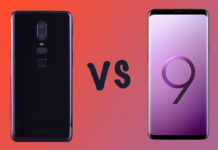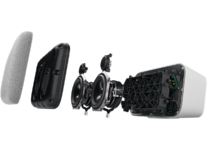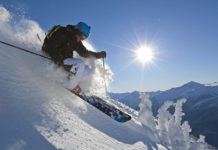We’re taught in primary school that there are seven continents exist on the globe: Asia, Africa, Antarctica, Australia, Europe, North America and South America. However, some geologists do believe that Europe and Asia are into a supercontinent, known as Eurasia. But according to a new study, a team of New Zealand geologists have identified a new concealed underwater continent located in the southwest Pacific Ocean and attached to New Zealand that they have named “Zealandia”. This newly proposed continent is about 4.9 million square kilometres (1.89 million-square-miles) in size [It’s two-thirds the size of the world’s (current) smallest continent, Australia], Zealandia would be the Earth’s eighth and smallest continent, if confirmed.
By gathering satellite data, gravity map technology and rock samples, among many other things, a team of 11 researchers found that “Zealandia” is a region of mostly (about 94 percent of the landmass) submerged land in the Pacific Ocean. But at its highest points, it protrudes other 6 percent above the ocean surface in the form of New Zealand and the French overseas territory New Caledonia, along with several other territories and island groups, according to a new paper published online on Thursday (14 February 2017) in GSA Today, the journal of the Geological Society of America. The concept of Zealandia isn’t new, the term “Zealandia” was first coined in 1995 by Bruce Luyendyk, a geophysicist at the University of California at Santa Barbara.

“I hope Zealandia will now start to appear on world maps which show the other continents,” said Nick Mortimer, a geologist with GNS Science in Dunedin, New Zealand. “There is an extra one, and it is as real as all the others.” Mortimer was the lead author of the paper, “Zealandia: Earth’s Hidden Continent.”
“This is not a sudden discovery, but a gradual realization; as recently as 10 years ago we would not have had the accumulated data or confidence in interpretation to write this paper,” the researchers wrote in GSA Today, a journal of the Geological Society of America.
Ten of the researchers behind the paper represent institutions based in New Zealand and New Caledonia; one scientist works for a university based in Australia. But other geologists are almost certain to accept the team’s conclusions, said Professor Bruce Luyendyk, who wasn’t involved in the study.
“These people here are A-list earth scientists,” Luyendyk told Business Insider. “I think they’ve put together a solid collection of evidence that’s really thorough. I don’t see that there’s going to be a lot of pushback, except maybe around the edges.”

Photo Courtesy:- GSA TODAY 2017
Nick Mortimer and his research team have been enterprising for “Zealandia” to be considered a new continent for the past decade. While its existence and name were first proposed in 1995 by American geophysicist Bruce Luyendyk, using satellite maps that incorporate Earth’s gravitational field. Lyendyk said that he never intended “Zealandia” to be a new continent, saying that he only coined the term to describe New Zealand, New Caledonia, and some pieces and slices of crust.
This paper adds the new knowledge that Zealandia began to broken away from Antarctica about 100 million years ago, and again from Australia around 80 million years ago and sunk beneath the ocean as part of the break-up of the super-continent Gondwanaland. When Zealandia pulled away, it became very thin, but it also became an intact, single piece of continental crust worthy of being considered a big, high-standing continent.
The study concludes that New Zealand and New Caledonia aren’t just island chains, but are part of a 1.89 million-square-mile region separate from Australia. The islands are connected by “submerged continental crust across a large area of Earth’s surface,” the authors of the study wrote. The researchers are describing Zealandia as “the youngest, thinnest, and most submerged” continent on the planet.

There are lots of article has been written in the paper about many things including the title – “Zealandia: Earth’s Hidden Continent”, in which they claimed “Zealandia” has all four attributes necessary to be considered a continent.
The four characteristics are – Elevation, Geology (geological components), Crustal Structure and Limits and Area. The attributes include ‘high elevation relative to regions floored by oceanic crust’ as well as the presence of three types of rocks – igneous (spewed by volcanoes), sedimentary (made by erosion) and metamorphic (altered by heat/pressure). Typically, Zealandia’s crust thickness ranges from 10 to 30km (6 to 19 miles), less dense crust than the surrounding ocean floor, and an area large enough to distinguish it from a “microcontinent or continental fragment”.
Geologists determined that the continent, Zealandia (New Zealand and New Caledonia) is a distinct geological entity and meets all the criteria that are satisfied by the existing seven continents, the researchers said. Zealandia is highly elevated above the area that surrounds it (poke high enough from the sea floor), has its own distinctive geology, the area that it takes up is well defined and it has made of thicker, less dense crust — like the other seven masses which we currently class as continents.
“The scientific value of classifying Zealandia as a continent is much more than just an extra name on a list. That a continent can be so submerged yet unfragmented makes it a useful and thought-provoking geodynamic end member in exploring the cohesion and breakup of continental crust.”

Lead author Nick Mortimer said scientists have been attempting to prove Zealandia’s existence for almost 20 years. But after two decades of research, scientists believe that the isolated island belonged to its own super land mass.
“If we could pull the plug on the oceans, it would be clear to everybody that we have mountain chains and a big, high-standing continent,” lead author Nick Mortimer told New Zealand TV station TVNZ.
As we all know, there are seven continents in the world and for geologists, there are six recognised continents geographically: Africa, Antarctica, Australia, Eurasia (Europe and Asia), North America, and South America. While most of us would call this latest discovery (Zealandia), the eighth continent, geologists often consider Europe and Asia as one continent called Eurasia (due to the geographical landmass). Previously, New Zealand and New Caledonia were grouped with Australia under the moniker Australasia.
There is no official body that recognises new continents, but the scientists believe Zealandia has the same features as the six we are familiar with. Satellite technology, gravity maps of the sea floor, rock samples among many other things have recently been used to determine that Zealandia is a one large, unified area (could claim continent status), and it is on this basis that the geologists establish their claim.
Welcome to Zealandia. Inside this fence is an ancient world where devastated New Zealand species can thrive again https://t.co/iw6Bo2Wu80 pic.twitter.com/p296ixECCQ
— New Scientist (@newscientist) February 3, 2017
Nick Mortimer wrote: “As well as being the seventh largest geological continent, Zealandia is the youngest, thinnest, and most submerged.
The geologists do not propose which areas of the potential new continent should belong to New Zealand, and which not belong to New Zealand. According to the GNS Science research institute (NZL), New Zealand may have tens of billions of dollars’ worth of fossil fuels and minerals in its offshore regions around the landmass.

Now this latest news about a new concealed underwater continent located in the southwest Pacific Ocean leaves the question as to whether or not it would be counted as one of the officially recognized continents on the earth. If our teacher taught us that there are eight continents exist on the earth; if geography textbooks finally have to be revised in order to accommodate and include this new finding continent. However, since there is no official body to recognize continents, only time and future research can tell if Zealandia would finally be included on the codified list of continents that genuinely exist.
Mr. Mortimer said. “What we hope is that Zealandia will appear on world maps, in schools, everywhere.”



























